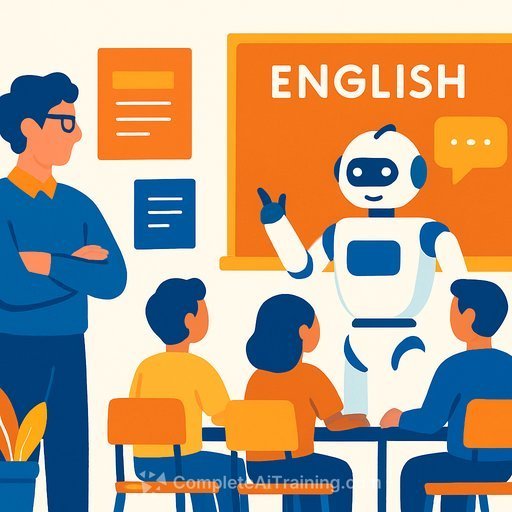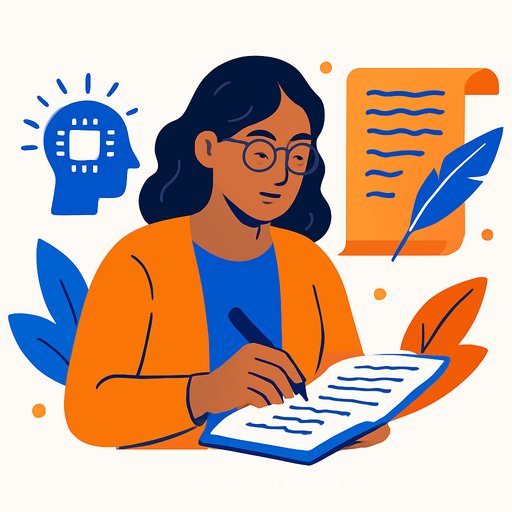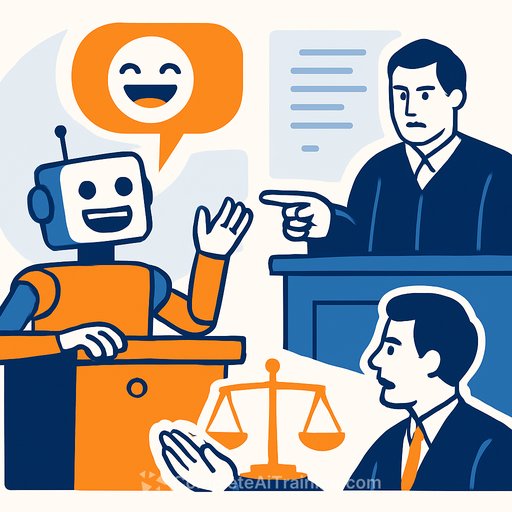AI in Philly Classrooms: What It Means for Your Writing
In many high school classrooms, AI tools now sit next to the pencil. Students brainstorm, draft, and polish with assistants that blur authorship. To a reader, it's tough to tell who - or what - wrote the words.
That tension isn't limited to teenagers. If you write for a living, this moment is your case study. The choices schools and students face mirror the choices on your desk.
The patchwork reality
Philadelphia educators are improvising. "It's a little idiosyncratic," said Amy Stornaiuolo, a professor of education at the University of Pennsylvania. "It's up to the individual instructor… There's not like a university-wide, or even a school-wide set of guidelines."
Teachers and students often get minimal direction. Some classes embrace structured use; others ban it. Most are somewhere in between.
Use is widespread - rules aren't
Adoption outpaced policy. A 2023 study from Common Sense Media reported that many teens were already using ChatGPT for schoolwork, with a significant share doing so without permission.
That was years ago in internet time. Today's writers - students and professionals - are already building habits, good or bad. See Common Sense Media.
The cognitive cost
Kris Perry, who leads Children and Screens, points to early data that raises a flag. If AI takes over the heavy lifting, the brain does less of it. "MIT very recently found when students wrote essays with LLMs, it produced lower levels of brain activity than if they had written it without any assistance at all," Perry said.
There's also the hit to satisfaction and ownership. Outsourcing the work can outsource the pride that comes from finishing it.
Losing your voice: a student's wake-up call
High school senior Angelina Vo used AI to "maximize" time on applications and assignments. It worked - until she noticed her writing sounded foreign. "I had completely lost my style and my personality," she said.
She had to study her old papers to rebuild her voice - the quirky vocabulary, the rhythm, the structure. That's a useful mirror for professionals who feel their drafts are starting to blur together.
Responsible use: simple boundaries writers can borrow
Stornaiuolo's team studies "boundary-making" - practical lines students draw so the tool helps without taking over. Writers can apply the same moves.
- Only paste small sections for feedback, not entire drafts.
- Keep AI in a separate window. Write "for real" in your doc, test ideas in the other tab.
- Ask for critique, prompts, counters, and structure - not final prose.
- Mark AI-influenced lines, then rewrite them in your voice before shipping.
- Store a voice file: 10-20 of your best paragraphs to compare tone against.
Bias, access, and accusations
There's a quieter problem: who gets accused. "There's a disproportionate number of students from marginalized identities and communities who are accused of using AI when they have not," Stornaiuolo said. Some avoid the tools entirely out of fear.
Access matters too. As Perry notes, families with more time, devices, and supervision can teach thoughtful use. Others may be left with fewer options and more risk.
Let teens lead - a cue for professionals
Perry calls this a chance for youth to lead peers through slower, safer adoption. The data backs the agency approach. A Brookings study found students engage more when they help shape their projects and learning. Read Brookings.
Writers can steal that principle: give yourself constraints, choices, and ownership. Don't hand the pen away - bring the tool into your process with intent.
Quick checklist for writers who use AI
- Zero draft first. Even 10 minutes of messy writing builds ideas you can refine.
- Use AI for outlines, counters, and summaries. Keep original phrasing yours.
- Create a style guardrail: a short list of words, metaphors, and structures that feel like you.
- Label each assist (idea, structure, line edit). Delete or rewrite any assist that dulls your voice.
- Track time saved vs. time lost fixing tone. If you're rewriting everything, change how you prompt.
- Add a disclosure line for clients if appropriate. Clarity builds trust.
What Philly classrooms remind us
Policies lag. Tools tempt. Skill development still matters. The writers who win won't reject AI or hand it the wheel - they'll set boundaries, keep their voice, and use the tool to think better, not less.
Further practice and tools (for writers)
- AI tools for copywriting - curated options to test without losing your voice.
- Prompt engineering ideas - improve structure and feedback, not just outputs.
Quotes to keep
- "They might have a teacher who is kind of up to date with it, but in general, schools themselves tend not to be having a unified message." - Amy Stornaiuolo
- "Using AI… displace[s] key moments of development that build the skills that allow us to do increasingly difficult tasks." - Kris Perry
- "I had completely lost my style and my personality in my writing… I had to go back and look at old assignments." - Angelina Vo
Your membership also unlocks:






